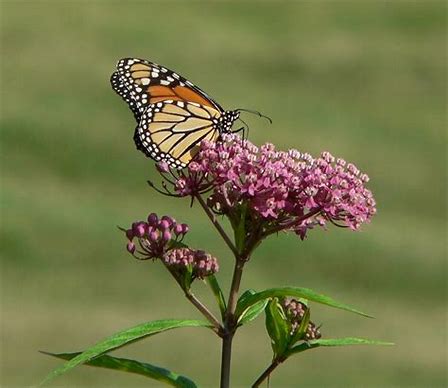A monarch butterfly on a blooming swamp milkweed. Worcester County Conservation District will be talking about the birds and bees of an eco-friendly garden by Veer Mudambi | Worcester Magazine. The Friday webinar will discuss the important connection between native plants and birds. While spring has not necessarily sprung, it’s certainly crouched in wait around the corner. Now is the time for local gardeners to begin planning their plot and buying seeds. However, even if it’s behind a neat picket fence or steps from your front porch, every garden is a part of the local ecosystem, affecting different plants and animals. It follows then, that the best fit would be native plants because they are evolved to fill a specific niche in our ecosystem. At first that might sound like it limits aesthetic choices, such as color, shape or composition, not to mention being difficult for the casual gardener to find out where each of their plants come from. But focusing on native plants doesn’t have to mean sacrificing any of those things — there are resources available to balance form and function.To help keep gardens in tune with nature beyond the fence, Mass Audubon is partnering with Worcester County Conservation District to provide an educational resource for local horticulturalists. They will present a series of webinars, in conjunction with the WCCD’s annual seedling sale and its focus on native plants. “It’s not like you can go into Home Depot and find the ‘native plants’ section,” said Martha Gach of Mass Audubon’s Broadmeadow Brook Wildlife Sanctuary. Historically, gardening trends have been to use plants for ornamental, sentimental or practical reasons. Roses, for instance, are universally admired and gardeners take pride in growing them. Some may want a plant in their garden that reminds them of where they came from — plants are ideal keepsakes, like taking a piece of home with you. Finally, sometimes a plant might thrive and hence seem suited to the climate. While these are all reasonable situations, one has to take care that one isn’t harboring an invasive species — in fact, the reason invasives have become such a problem is that they are very hardy, adapt to wherever they find themselves and are fairly easy to grow. Northern Parula Apple blossoms Martha Gach, Broadmeadow Brook Wildlife Sanctuary. The problem, however, is that these plants can cause ecological issues in their new environment, such as overtaking or crowding out a native plant that serves as a vital food source for certain insect species. The new plant may not be able to fill this same role — with repercussions further up the food chain.“By not feeding the bugs, they don’t feed the birds,” explained Gach. And subsequently, the insects and birds most associated with native plants, known as pollinator species, will fail to prosper with an impact on other plants such as much needed fruit trees.WCCD conservation planner Joel Betts points to the milkweed and monarch butterfly as an example of animals needing a specific species of plant. Milkweed is the only plant where monarch caterpillars can feed and cocoon. “If you don’t have milkweeds on the landscape, you don’t have monarchs,” said Betts. He indicates other examples such as Golden Alexanders as hosts for specific bees and butterflies, while cardinal flowers are great for hummingbirds.“Golden Alexander in particular is a win-win native landscaping plant for beauty, wildlife, and function,” said Betts, “as it can grow in variable conditions and is a host plant for black swallowtail butterflies, and Andrena ziziae bees.”When planting for birds, two factors to keep in mind are shelter and food, structured at low, medium and high levels, depending on where different species nest. While many plants can serve as shelter, said Gach, one also has to think about it in terms of what sustenance they provide. “If you think about it narrowly for shelter, that can be a problem.” Indigenous plants support caterpillars and insects in turn support baby birds. For example, a baby chickadee needs about 6,000 caterpillars between when they hatch and leave the nest.Berry producing plants, such as holly and sumac, can also provide food for birds directly. Golden Alexander – supports the specialized bee: Andrena Ziziae, whose females eat only its pollen and is also a host plant for the caterpillars of … Show more Worcester County Conservation District. Though native plants are the first choice, not all non-native plants are harmful to pollinator gardens, and some can even help, acting as stop-gap measures until you find the local counterpart. “You don’t need to pull out all your (non-native) plants,” said Betts. “Lavenders, mints, crab apples — anything that produces a good flower throughout the season — will benefit pollinators.” There’s a fine line between non-native and invasive, he explained. A plant is labeled invasive based on “its ability and likelihood to reproduce outside of the garden. Vines, shrubs and certain perennials are prime escapees,” he said. A benign non-native plant is one that needs the controlled conditions of a garden to flourish and be less likely to be spread by wildlife or able to compete with local plants. Cultivated crops are the most obvious example here, having co-evolved with humans — there’s no chance of stumbling across a patch of wild corn while out in the forest. Corn cannot disperse its own seeds and therefore cannot survive without people. Luckily, environmentally conscious gardeners don’t need to worry about accidentally unleashing an invasive species on their local habitat, as state regulations have been implemented against their sale or purchase. The primary offenders, said Betts, are currently Japanese barberry and burning bush, which can still appear in landscaping, as well as oriental bittersweet, “which a lot of people have growing on their property and don’t realize.”As invasive species spread and take hold, it effectively decreases the diversity of natural areas. “When you have just one kind of plant in the ecosystem, you don’t have the variety that insects and other animals need,” said Gach. At its most extreme, situations like this can lead to unbalanced ecosystems or even mass die-offs. Where pollinator gardens support wildlife, rain gardens can improve the local water quality and make a positive ecological impact. “Rain gardens are areas set aside to capture storm water runoff and filter it before it enters the groundwater supply,” explained Betts. The runoff from impervious surfaces like driveways, roads and rooftops contains all of the pollutants from those surfaces such as salt, oil and antifreeze — none of which have a chance to filter out in the soil “and go straight in our rivers.” Additionally, as these surfaces are often warmer than the surrounding area, the water runoff will often have an unnaturally high temperature, affecting flora and fauna. Rain gardens address this issue by helping to filter and cool this water.Native plants are ideally suited for this task and a rain garden of deep-rooted perennials and shrubs provide the necessary filtration structure to prevent soil erosion along with the water run-off. It can also double as a pollinator garden, especially with plants like milkweed. “If a rain garden blooms, it will attract pollinators as well,” said Gach. Irises, wild bergamot, blazing stars and boneset are some of the plants used in Broadmeadow’s own rain garden. Naturally, the location of a rain garden depends on where there is runoff — for homeowners, roofs and driveways are the most common sites. For the former, under a downspout, and the latter, at the end of a path where water leaves the asphalt. A sandy soil base that allows water to percolate very quickly is key, said Gach. While deep rooted is good, it should not be the sole factor. It’s more important to have plants that can tolerate both wet and dry cycles, as well as a wide variety to ensure something is in bloom all season long from April to October.“What people like Joel and myself are trying to do is get the word out about how we should be using native plants in our landscaping, like flowers, shrubs and trees,” said Gach. Keeping your yard in sync with the ecosystem and not competing with it serves a larger purpose, even helping the pollinators that support the food you eat. Both pollinator and rain gardens can be key players in creating a healthier ecosystem and one doesn’t need a degree in horticulture to plan or implement them.“There’s a lot of opportunity for gardeners to plant and manage gardens in a way that benefits nature rather than fights against it,” said Betts.Martha Gach will be hosting a webinar at 12 p.m. Friday, March 12 – Native Plants and birds: What’s the Connection? To register, go to the WCCD’s website, Worcesterconservation.org and click on Workshops and Webinars. Share your thoughts More StoriesA CT staple: Willimantic Brewing Companyfood A Connecticut, craft beer staple: David Wollner’s Willimantic Brewing Companyfood Grandparenting: Reading a good book can answer those tough questionslifestyle The Local Flavor: Brick & Basil serves up pizza in Norwichfood The Local Flavor: Brick & Basil serves up pizza for Norwichfood HelpTerms of ServiceYour California Privacy Rights/Privacy PolicyPrivacy PolicySite MapAccessibilityOur Ethical PrinciplesDo Not Sell My Info/Cookie Policy© Copyright Gannett 2021
Press: Worcester Magazine article Talking about the birds and bees of eco-friendly gardening

